The term Tupi-Guarani is designated to define one of the ten linguistic families of the Tupi trunk.
The other linguistic trunks identified in Brazil are the Jê and Arauak trunks, from which the set of languages of the indigenous peoples that inhabited Brazil at the arrival of the Portuguese colonizers derive.
Tupi originated from the Tupinambá language, which was incorporated by colonizers and missionaries, being adopted as the General Language of Brazil.
Guarani is still spoken today by the Guarani, Guarani-Kaiowá, Guarani-ñhandeva and Guarani-m'byá peoples.
Today, Brazilian Indians still share 150 languages and dialects and part of the repertoire that has already been incorporated by Portuguese, such as manioc, Curitiba, Aquidauana, Iguaçu, tapioca, among others. Before the arrival of Pedro Álvares Cabral's squadron, there were at least a thousand.
Keeping their language, customs and social organization, the indigenous peoples of Brazil are called nations and not tribes, a popular and incorrect denomination. There are similarities between the many peoples, but the differences stand out.
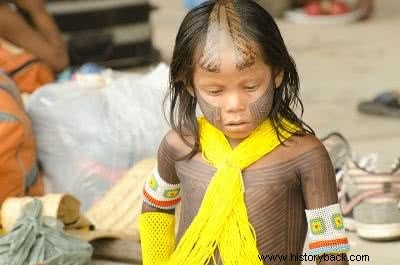 Kaiapó Indian. Photos:Funai
Kaiapó Indian. Photos:Funai
Culture
Indigenous culture encompasses language, social and political organization, rituals, myths, art, housing, cosmology and way of relating to the environment.
See also:Jurupari
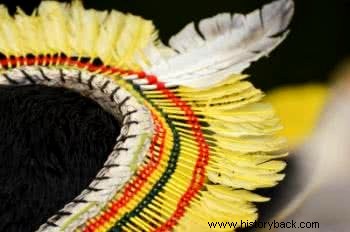 Pataxo Headdress
Pataxo Headdress
Religion
Brazilian Indians are polytheists , but his way of relating to religion changed drastically with the influence of colonization, of Catholic and monotheistic orientation.
They believed in the forces of nature, in the divinity of animals, plants and man himself interacting with all the elements.
Through oral tradition, they passed on the customs and guidelines for the rituals of life and death. Among the remarkable life rituals are the celebrations of passage, which marked the transition to adulthood.
The common characteristic of Brazilian indigenous peoples in terms of religion is shamanism. The shaman is responsible for conducting the rituals.
Among the Tupi-Guarani peoples, the shaman is called a pajé, the person who deals with the connections between living beings, nature, living and dead humans.
Art
Brazilian indigenous art is plural and making is not open to everyone. They are respected from the social hierarchy, the difference of gender and age to manipulate the materials that will result in decorative objects or adornments for rituals.
Feathers, braided plant fibers, clay, stones and pigments prepared manually are characteristic in indigenous art.
 Indian Pottery
Indian Pottery
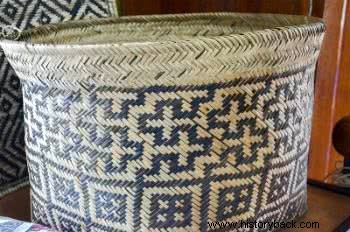 Vegetable fiber (straw) braided
Vegetable fiber (straw) braided
Way of Life
Most Indians in Brazil maintained the tradition of gathering and hunting for food. Agriculture was only rudimentary and some small animals were domesticated, such as the capybara.
In their social organization they were polygamous , mostly. The situation changed with colonization because of Catholic religious thought. They lived and many still live in community.
Housing can be collective or individual, depending on the people. The best known layout is the circular one, with a central space for the development of rituals and festivities.
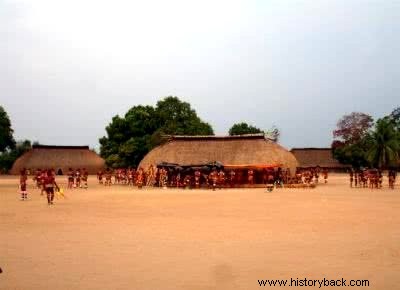 Houses are arranged in a circle and the center houses rituals and parties
Houses are arranged in a circle and the center houses rituals and parties
Guarani Indians
The Guarani Indians are among the first to have contact with the colonizers. They are divided into three groups:kaiowá, ñandeva and m'byá.
The name Guaraní means person. Today, these people inhabit nine Brazilian states, in addition to Argentina, Bolivia and Paraguay. In Brazil alone there are at least 51 thousand.
Although they are all Guarani, they have differences in speech, religious behavior and social organization. Today, the largest group living in Brazil is the Kaiowá, which means "people of the forest".
Hunters and gatherers, believe the earth is an extension of their own souls and this is one of the points of the land impasse that exists in Mato Grosso do Sul.
In the state, located on the border of Bolivia and Paraguay, indigenous people claim ancestral lands that the Brazilian government handed over to landowners before the 1988 Constitution.
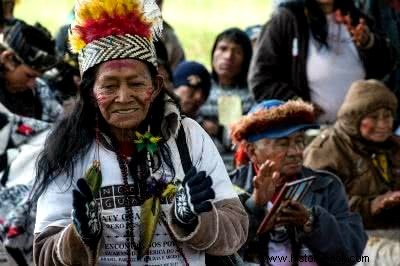 Aty-Guassu, the Great Gathering of the Guarani-kaiowá
Aty-Guassu, the Great Gathering of the Guarani-kaiowá
See also:Indian Day (April 19)
